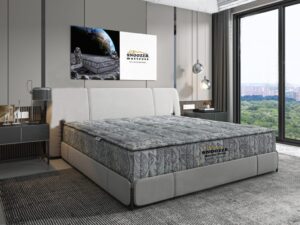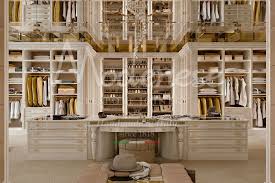Hidden Costs of a Poorly Designed Bathroom: What You Don’t See Can Hurt You
Bathrooms may be one of the smallest spaces in a home, but they can cause some of the biggest headaches if not designed correctly. While you may be focused on tiles, vanities, and lighting, it’s the hidden details—those you don’t see—that can quietly drive up your long-term costs.
From water damage to inefficient layouts, poor planning can result in frequent repairs, high utility bills, and even health risks. This guide breaks down the hidden costs of a poorly designed bathroom and offers practical tips to help you avoid them.
1. Water Damage from Incorrect Slope or Drainage
Improperly sloped floors or poorly installed drains may seem like minor errors, but over time, they lead to pooling water, tile damage, and subfloor rot.
Signs:
- Water collecting near the shower or toilet
- Mold along the floor edges
- Damp smells or discolored grout
| Cost Consequence | Average Repair Cost (AED) |
|---|---|
| Subfloor replacement | 2,500 – 6,000+ |
| Mold removal | 800 – 2,000 |
| Tile reinstallation | 1,200 – 3,000 |
Prevention Tip: Ensure floors are sloped toward the drain (1–2% gradient) and install linear or center drains with waterproof membranes.
2. Hidden Leaks from Poor Plumbing Placement
Aesthetically pleasing bathrooms often hide plumbing behind walls or under floors. But poor routing, cheap materials, or tight spaces can lead to hidden leaks.
Hidden Costs:
- Soaked drywall or ceilings (especially in apartments)
- Neighbor complaints in shared buildings
- Emergency plumbing fees for access and repair
Pro Tip: Use access panels behind toilets or showers to allow future maintenance without breaking tiles.
3. Inaccessible Fixtures That Increase Repair Costs
Many bathrooms are designed for looks over practicality. Concealed flush tanks, tightly boxed-in bathtubs, or vanities with no back access can complicate even minor fixes.
| Fixture Type | Hidden Cost |
|---|---|
| Concealed cisterns | Wall removal for repairs |
| Boxed bathtubs | Demolition needed for pipe access |
| Designer vanities | Require custom solutions for pipe work |
Design Tip: Balance beauty with function—wherever possible, keep key plumbing elements accessible.
4. Poor Ventilation Leading to Mold and Odors
Bathrooms in the UAE, especially those without windows, are prone to moisture buildup. Without proper ventilation, condensation forms on walls, ceilings, and inside cabinetry—leading to persistent mold and odor issues.
What It Costs You:
- Recurring repainting or regrouting
- Damage to cabinetry and shelving
- Health risks from black mold spores
| Ventilation Type | Best Use Case |
|---|---|
| Window-based | Natural and energy-efficient |
| Exhaust fan | Essential in closed bathrooms |
| Ceiling vent with timer | Great for post-shower auto-ventilation |
5. Inefficient Layout = Daily Frustration + Renovation Costs
If the layout ignores how you use the bathroom, you’ll quickly feel the impact:
- Bumping into vanities when opening the door
- Toilet squeezed next to a bathtub
- No counter space near the sink
- Difficult-to-reach storage
Over time, these frustrations push homeowners toward costly reconfigurations.
Fix Now, Save Later:
Follow standard spacing guidelines:
- 20 cm clearance on each side of the toilet
- 90 cm in front of vanities
- 80–100 cm between fixtures if more than one person uses the bathroom
6. Inefficient Lighting and Electrical Placement
Lighting isn’t just decorative—it’s critical for daily tasks like shaving, makeup, or even safe movement at night.
Hidden Costs:
- Eye strain from poor mirror lighting
- Risk of electrical shorting near water sources
- Additional costs to install new points later
| Common Mistake | Better Alternative |
|---|---|
| Single ceiling light | Layered lighting (ambient + task) |
| No outlet near mirror | Add side-wall socket with cover |
| Halogen bulbs in humid zones | Use LED moisture-rated fixtures |
7. Over-Styled, Under-Functional Vanities and Storage
Some bathrooms prioritize minimalist looks at the expense of storage. But without enough room for daily essentials, clutter builds up—forcing you to buy add-ons or redo cabinetry.
Storage Fixes to Add at Build Time:
- Deep drawers for towels and toiletries
- Wall-mounted mirrored cabinets
- Vertical shelving or niches in the shower
- Pull-out baskets under the sink
Functional storage saves time, preserves visual cleanliness, and avoids future spending on temporary solutions.
8. High Utility Bills from Poor Water-Efficient Choices
Designing without considering water usage can silently drive up your monthly expenses.
| Fixture | Efficient Alternative | Savings (Est. Monthly) |
|---|---|---|
| Standard shower | Water-saving showerhead | AED 25–40 |
| Basic flush | Dual flush system | AED 15–30 |
| Old faucets | Aerator-equipped or sensor taps | AED 10–25 |
Tip: Look for water-efficient ratings when choosing fixtures. It’s better for your bill and the environment.
9. Skipping Waterproofing Layers
A common shortcut in budget builds is underestimating the need for proper waterproof membranes under tiles, around tubs, or behind wall-mounted taps.
Hidden consequences:
- Wall leaks into adjacent rooms
- Paint bubbling or peeling in closets or bedrooms
- Structural damage over time
Essential Waterproof Zones:
- Shower and bath areas (walls and floor)
- Floor behind and under the toilet
- Any wall with plumbing fixtures
A beautiful bathroom that’s poorly designed is like a luxury car with engine trouble—it may look great, but it won’t perform. Whether you’re building from scratch or remodeling, make decisions that prioritize longevity, accessibility, and efficiency—not just surface appeal.
Here’s a quick summary of where most hidden costs creep in:
| Design Oversight | Long-Term Impact |
|---|---|
| Poor drainage/slope | Water damage, mold |
| Inaccessible plumbing | Costly emergency repairs |
| No ventilation | Humidity, mildew |
| Inefficient lighting | Additional electrical work |
| Style-over-function storage | Clutter, cabinet replacements |
| Cheap fixtures | Higher water bills, early replacement |

)
)
)
)




